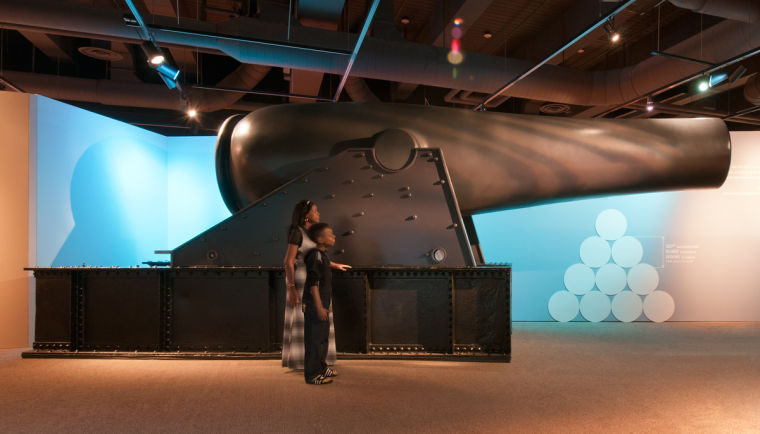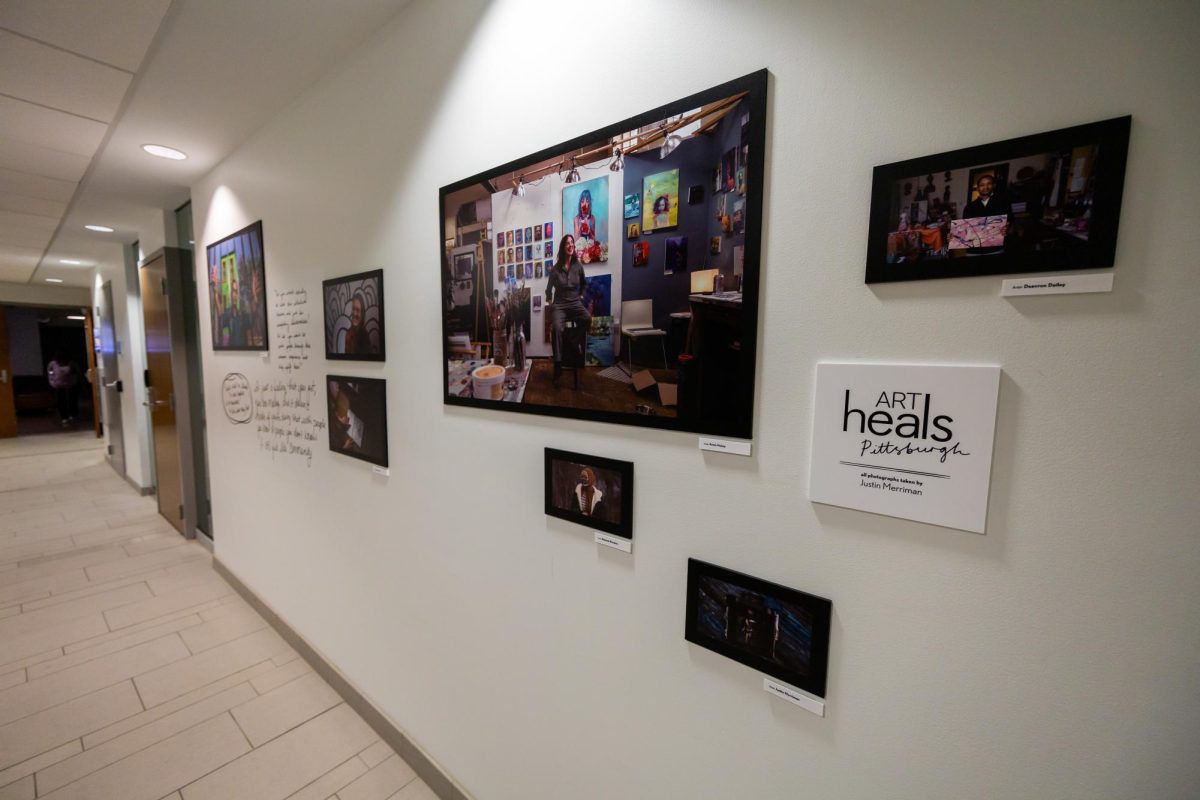Exhibit showcases Pittsburgh’s fascinating role in Civil War
July 17, 2013
Imagine living in Pittsburgh during the outbreak of the Civil War: Confederate troops are moving north, their destination unknown and — considering you might not have been a radical Republican — you’re not exactly sure where you stand on the issues. Defending the Union is imperative, but is it worth dying for? Does President Lincoln plan to extirpate the practice of chattel bondage of human beings, or are there plans to concede to the South’s demands? And possibly the most important question of all: Does Gen. Robert E. Lee plan to attack Pittsburgh, the Union’s Engine of Production?
From the organizer’s perspective, the Heinz History Center attempts to shed new light on the way Americans view the Civil War with its exhibit, “Pennsylvania’s Civil War.” In honor of the 150th anniversary of the Battle of Gettysburg and in association with the statewide Pennsylvania Civil War 150 program, the exhibit, which runs through Jan. 4, allows patrons to understand how ubiquitous the effects of the Civil War were, specifically from Pennsylvanians’ point of view.
“One of the things that sets the exhibit apart is the way that we have told the story,” Leslie Przybylek, curator of history at the Heinz History Center, said.
The goal of the exhibit is to look “at [the Civil War] not so much in a purely chronological sense, but thematically looking at it as an experience.”
Starting at the home front and then moving on to the life of a soldier in a Union camp, “Pennsylvania’s Civil War”shows how every life in a Pennsylvanian household was affected.
“If you were a young man here in the state or a woman whose husband was going off to war,” said Przybylek, “what are some of the things you would have seen and felt and heard?”
The displays, artifacts and mementos serve to answer these questions. Posters reading, “Wanted: A Few Good Men” and “Save the Union” adorn the walls, echoing Lincoln’s call for 16 infantries from the state of Pennsylvania, second only to the state of New York. The interactive “Which Hat Would You Have Worn?” section describes the roles and possible dispositions of children, women and businessmen who remained at home.
These depictions describe Pennsylvanians as unique pieces of the Northern puzzle, just as the state itself had a specific place within the war effort.
Described as the “Arsenal of the Union,” Pennsylvania manufactured more than 3,000 canons, some weighing as much as 90 tons. A life-sized replica modeled after the Rodman Cannon is on display in “Pennsylvania’s Civil War,” complete with specifications and illustrations that depict how powerful the weapon was. The well-lit display is one of the can’t-miss attractions, considering it was originally constructed at the Fort Pitt Foundry right in Pittsburgh’s Strip District. As Przybylek describes it, it is “a piece that could have been cast nowhere else on earth at the time.”
But technological advances were not limited to solely military inventions.
Cameras and portable printing presses revolutionized the way war was documented and “allowed soldiers to communicate and still maintain bonds with friends and family back home,” Przybylek described.
Another key component of the History Center’s newest installment is a look at a very important and topical question: What if Lee’s troops had decided to attack Pittsburgh, or even Philadelphia?
“Pittsburgh could have been Gettysburg,” Brady Smith, communications manager at the History Center, said. “And at that time that fear was very real.”
From a strategic standpoint, the idea was not only plausible, but also highly likely. A defeat of Union troops at their industrial epicenter would have been a crushing blow for the North. In preparation for such an attack, both of Pennsylvania’s major cities, through their respective Departments to Assist Defense, assembled a considerable workforce to build fortifications — a precaution that we now know was for naught.
Perhaps the most gruesome part of the display is the exhibit that takes guests into the personal stories and bloody depictions of a war whose horrors are at times difficult to describe.
Of the more than 33,000 Pennsylvanians who died in the war, 60 percent of them died from noncombat-related injuries, with many more having limbs amputated with no sterilization whatsoever. Because of these deplorable conditions, more than 7,000 volunteer sanitary commissions were instituted nationwide to try and remedy the many preventable deaths that occurred. It was just another example of how almost every American citizen was involved in the Civil War in one way or another.And often times, that involvement transcended generations.
“I have always been interested in the Civil War because my great-great-grandfather was in the Civil War twice,” Denny Shealer, 66, a retiree from Philipsburg, Pa., said.
Shealer decided to make the trip to Pittsburgh for the new exhibit to reflect on the historical and personal significance of the war.
“At that time, people who did not want to enter the draft could pay someone else to take their place, so [my great-great-grandfather] was in a second time,” he said.
From the battlefield to the war’s aftermath, “Pennsylvania’s Civil War”concludes with pictures of veterans’ parades, evidence of long-lasting bonds between infantry mates and political and metaphysical thoughts on the outcome of such a bloody, national tumult.
By the end of the exhibit, Przybylek’s words hold true: “The uniqueness of [‘Pennsylvania’s Civil War’] is that we really tried to look for ways throughout the exhibit to personalize it.”
The artifacts amassed by the Heinz History Center are not just historical relics, but rather, personal heirlooms. And in the vein of true historical analysis, the stories are told as depictions of people representing a greater whole.
A camp fiddle, belonging to the 193rd Pennsylvania Infantry, is on display with the names of each member etched into the aging wood. Music was a popular form of entertainment during long periods of downtime in the war.
Jacob Shenkel, a musician fighting for the Union, is shown in a photograph ostensibly lying dead after a battle. At that time, cameras were not quick enough to capture battle sequences, and it would take years before historians realized that the photo was staged, and Shenkel was just playing dead.
A life-sized figure of a bull terrier belonging to Company F of the 102nd Pennsylvania Volunteer Infantry sits stoically among bright display lights. With soldiers hundreds of miles from home and missing any semblance of the life they had known before, a playful pooch was a stress reliever as well as a morale booster.
“Pennsylvania’s Civil War”is an amalgamation of high-resolution photographs, authentic artifacts and displays and interactive pieces that help elucidate another side of Civil War history.
Smith said that the History Center has received overwhelmingly positive feedback thus far. Shealer mirrored the sentiment when he described the exhibit as “very impressive,” both in terms of content and appearance.








